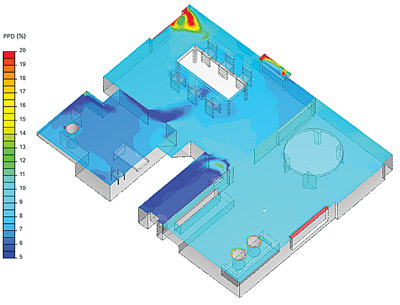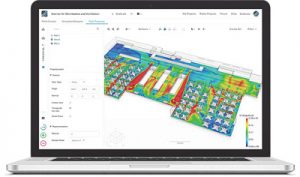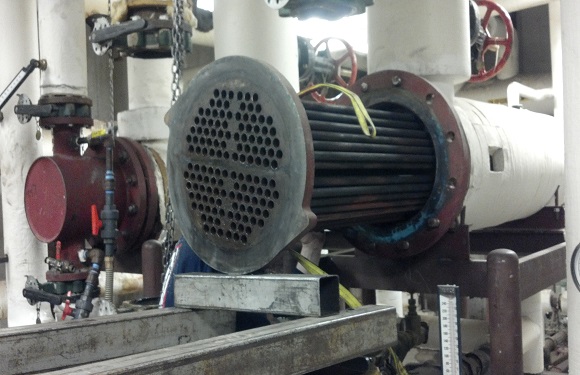
News
HVAC Design and Efficiency with CFD Simulation
By Jon Wilde, Vice President of Customer Success, SimScale
In the places we live, learn, and work, we now expect a comfortable environment that protects us from the summer heat or winter cold. An uncomfortable temperature in an indoor space can upset our general wellbeing and affect our focus. For this reason, an architect, interior designer or HVAC engineer should always take thermal comfort into account.

Assessing and optimizing thermal comfort to ensure the most comfortable indoor environment possible is much easier with HVAC design software and fluid flow simulation.
How Is HVAC Benefiting from Fluid Flow Simulation?
Computational fluid dynamics (CFD) software is revolutionizing the HVAC industry. Most of all, it makes it easy to investigate airflow patterns, temperature distribution and heat transfer (including radiation). It can, for example, show where heat is escaping, where ventilation is poor, or where cold spots are occurring. Using the knowledge from a collaborative CFD simulation, where multiple parties are able to enter information, engineers and designers have greater transparency over an entire HVAC system. Any design can be inputted and tested even before the physical space exists. Whether in the initial design stage or analyzing an existing building for improvement potential, HVAC professionals can make decisions informed by accurate data and results shown in the simulation. As tests are run virtually, costs and resources used are much lower than performing physical analysis.
Measuring Thermal Comfort and Indoor Air Quality

In public spaces such as classrooms or hospitals, thermal comfort and indoor air quality are more than subjective considerations for occupant satisfaction. In some cases, they are clearly defined by regulation. From drafts or the heating and cooling of a person to contaminant control or smoke extraction, building codes such as ASHRAE 55 or ISO 7730 describe factors, levels, and requirements that must be met for the respective approval. Some of these are based on fixed conditions, others on conditions that change over time or due to external factors such as solar radiation or the number of people entering or exiting a room and therefore affecting radiative warmth. Using simulation, an engineer can visualize and assess these factors, choosing whether to use a steady-state or transient simulation. This ensures the interior being designed will continually provide adequate comfort for occupants, despite changes such as increased wind creating drafts or heightened temperatures as a result of solar radiation on a sunny day.
Ventilation and Thermal Comfort in the Classroom: How Can CFD Help?

As a case example, this thermal comfort study from SimScale demonstrates how CFD simulation software can help engineers optimize the performance of HVAC systems in the initial stages of design. Ramboll UK used tools for simulation in order to assess factors such as natural convection, draft velocity, and temperature distribution in a classroom. In the results, Ramboll UK could see how effective draft temperature would affect school pupils and design the room accordingly to avoid any discomfort. The project was not only vital for the pupils’ satisfaction and productivity in the classroom but was in fact necessary after the introduction of new regulations for thermal comfort had been introduced by the Department of Education in Scotland. The results from the simulation enabled the school to ensure an efficient and comfortable design, and demonstrate compliance with local standards.
A More Scalable Solution for HVAC Design Simulation
While CFD is not a newcomer in HVAC, as engineers have employed its use for many years now, the way in which it is delivered is changing. Previously, such capabilities were available as heavy, rigid hardware programs often at an off-putting price. Today, front-runners such as SimScale provide CFD capabilities to younger, smaller, or less tech-oriented companies with an online solution. Taking simulation online, with everything available in a web browser, ensures the entire HVAC sector has access to what it needs to test and improve designs. With the ability to model different heating or cooling sources with simulations, HVAC engineers can better understand the thermal comfort in a room or entire building with increased accuracy. This leads to thermally optimized designs and informed decisions on where to include heating, air-conditioning, or ventilation systems. In the long run, spaces created with efficient HVAC design in mind will contribute to healthier, more comfortable living for all.
About the Author
Jon Wilde is vice president of customer success at SimScale, the provider of the world’s first production-ready SaaS application for engineering simulation.














